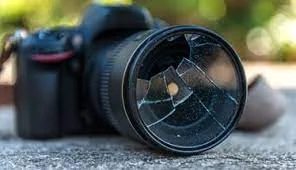Camera insurance is a crucial safeguard for photographers and videographers, providing financial protection against the unpredictable twists and turns that life can throw at their valuable equipment. In this comprehensive guide, we’ll delve into the intricate details of unlocking the lens navigating the World of Camera Insurance, offering insights into coverage types, choosing the right policy, and debunking common misconceptions.
A. Definition of Camera Insurance
Camera insurance is a specialized form of coverage designed to protect your photographic gear from a range of potential risks, including accidental damage, theft, and loss.
B. Importance of Camera Insurance
As camera equipment becomes more sophisticated and expensive, ensuring it against unforeseen circumstances becomes a paramount concern for both professionals and hobbyists.
II. Understanding Camera Insurance
A. Coverage Types
1. Accidental Damage
Camera insurance typically covers accidental damage, providing financial assistance in repairing or replacing your equipment if it’s damaged due to an unforeseen event.
2. Theft
Theft is a common threat, especially for photographers on the go. A comprehensive camera insurance policy includes coverage for stolen equipment.
3. Loss
Whether you misplace your camera during a shoot or it gets lost in transit, a good insurance policy will help cover the cost of replacement.
B. Exclusions and Limitations
Understanding the fine print is essential. Not all incidents may be covered, and there may be limitations on the maximum payout.
III. Why Your Camera Needs Insurance
A. High Cost of Camera Equipment
Modern cameras and accessories can be a significant financial investment. Camera insurance ensures that your investment is protected against unexpected events.
B. Vulnerability to Accidents and Theft
Cameras are often exposed to challenging conditions. Accidents happen, and theft is a real risk. Insurance provides peace of mind in such situations.
IV. Choosing the Right Camera Insurance
A. Researching Different Policies
Not all camera insurance policies are created equal. Thoroughly research various providers to find a policy that aligns with your specific needs.
B. Comparing Coverage and Premiums
Balance is key. Compare the coverage offered by different policies against their premiums to find the best value for your money.
C. Reading Customer Reviews
Learn from the experiences of others. Reading customer reviews can provide valuable insights into the reliability and responsiveness of insurance providers.
V. Factors Affecting Camera Insurance Premiums
A. Camera Value
The higher the value of your camera, the higher the premium. Understand how your equipment’s value impacts your insurance costs.
B. Policy Coverage
The extent of coverage you choose directly influences your premiums. Tailor your policy to match your risk tolerance and needs.
C. Policyholder’s History
Your claims history and overall reliability as a policyholder can affect the premiums you are offered.
VI. Tips for Lowering Camera Insurance Premiums
A. Security Measures
Installing security features, such as alarms and locks, can reduce the risk of theft, leading to potential premium discounts.
B. Bundle Policies
Consider bundling your camera insurance with other policies, such as home or equipment insurance, for potential cost savings.
C. Deductible Adjustments
Opting for a higher deductible can lower your premiums, but be sure it aligns with your financial comfort level in the event of a claim.
VII. Common Misconceptions About Camera Insurance
A. Assuming Home Insurance Covers Cameras
Home insurance may provide limited coverage, but it often falls short of fully protecting high-value camera equipment.
B. Believing Cameras Are Low-Risk Items
Despite careful handling, cameras are susceptible to accidents and theft. Acknowledging the risks is the first step towards responsible ownership.
VIII. The Claims Process
A. Reporting Incidents Promptly
Timely reporting of incidents is crucial. Delays can complicate the claims process and may even lead to denial.
B. Documenting Damage or Loss
Thoroughly document any damage or loss with photographs and detailed descriptions. This evidence will expedite the claims process.
C. Communicating with Insurance Providers
Maintain open communication with your insurance provider. Promptly respond to any requests for information or documentation during the claims process.
IX. Real-Life Stories: Camera Insurance Success Stories
A. Recovered Equipment Tales
Hear inspiring stories of photographers whose equipment was recovered thanks to their camera insurance, emphasizing the importance of being prepared.
B. Lessons Learned from Uninsured Incidents
Explore cautionary tales from individuals who faced challenges due to being uninsured, underscoring the potential consequences of neglecting camera insurance.
X. The Future of Camera Insurance
A. Technological Advancements
Advancements in technology, such as GPS tracking and smart security features, are likely to shape the future of camera insurance policies.
B. Evolving Policies and Coverage Options
Keep an eye on the evolving landscape of camera insurance, with policies adapting to new trends and emerging risks.
XI. How to Cancel or Change Camera Insurance
A. Understanding Policy Terms
Before making changes, thoroughly understand the terms and conditions of your policy to avoid any surprises.
B. Contacting the Insurance Provider
Communicate directly with your insurance provider to make changes or cancel your policy, ensuring a smooth transition.
XII. Frequently Asked Questions (FAQs)
A. What does camera insurance cover?
Camera insurance typically covers accidental damage, theft, and loss. Check your policy for specific details.
B. Is camera insurance mandatory?
While not mandatory, it is highly recommended to protect your valuable camera equipment.
C. How does the claims process work?
The claims process involves reporting incidents promptly, documenting damage or loss, and maintaining open communication with the insurance provider.
D. Can I insure multiple cameras under one policy?
Yes, many insurance providers offer policies that cover multiple cameras.
E. What factors influence camera insurance premiums?
Camera value, policy coverage, and the policyholder’s history are key factors influencing insurance premiums.
Conclusion
In conclusion, camera insurance is an indispensable tool for photographers seeking to protect their valuable equipment. By understanding the nuances of coverage, choosing the right policy, and adopting proactive measures, photographers can navigate the unpredictable world of camera ownership with confidence.
Frequently Asked Questions (FAQs)
- What does camera insurance cover?
- Camera insurance typically covers accidental damage, theft, and loss. Check your policy for specific details.
- Is camera insurance mandatory?
- While not mandatory, it is highly recommended to protect your valuable camera equipment.
- How does the claims process work?
- The claims process involves reporting incidents promptly, documenting damage or loss, and maintaining open communication with the insurance provider.
- Can I insure multiple cameras under one policy?
- Yes, many insurance providers offer policies that cover multiple cameras.
- What factors influence camera insurance premiums?
- Camera value, policy coverage, and the policyholder’s history are key factors influencing insurance premiums.

